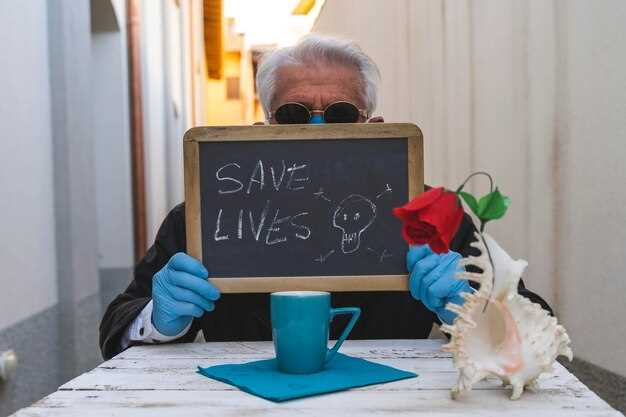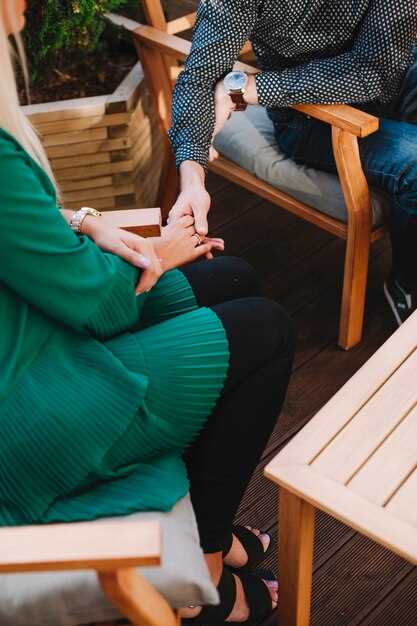Actionable benchmark: a carolina-based poll (n=312) conducted by a university research department found 47% of respondents changed assessment after one extra meeting; experienced participants noted first impressions created by brief encounters often miss subtler cues that may not ever appear until a relaxed setting. In practical terms, target a 4–10 day interval so momentum is retained but routines dont dominate the sample.
Set three concrete objectives for the encounter: observe listening depth, log one goofy spontaneous moment, and elicit a moving anecdote that reveals core personality. Structure the interaction around low-pressure tasks that involve minimal planning and clear exit points; this reduces social masking and lets natural responses surface so the other person could be evaluated on behavior, not rehearsed lines.
Use measurable micro-metrics: conversational depth (0–5), reciprocity ratio (# questions asked/# questions answered), and visible relaxation (0–3). During and after the meetup, note what happened in the following 48 hours and whether follow-through occurred; checklists that clearly capture outcomes produce faster, less biased conclusions. If thresholds arent met, that doesnt automatically disqualify potential, but it lowers probabilistic forecasts for sustained attraction.
Operational recommendation: compare the recorded metrics against personal thresholds established with feedback from experienced friends or a coach–someone who could offer perspective on patterns. Track the last two interactions, learn how reactions changed, and decide next steps based on data rather than impression alone; this approach increases chances of finding an attractive long-term fit.
Why you’ll feel more comfortable on the second date
Book a follow-up meeting within 3–7 days and pick a low-pressure activity (coffee, neighborhood walk, casual art visit) limited to 60–90 minutes to reduce initial adrenaline and allow natural interaction.
Familiarity shifts attention from immediate looks and surface attraction toward meaningful exchange: focused listening increases confidence, reduces the rush to perform, and creates space for genuine desire to emerge rather than being decided by first impressions.
Prepare a short list of three open prompts to guide conversation–examples: “What’s a story that shaped who someone is?”; “What keeps curiosity alive?”; “What did a past hobby start for you?”–and allow yourselves permission to answer candidly; avoid heavy topics like marriage until at least a few meetings.
A carolina-based example: Martina tried this template after an awkward first meet; she thinks the next meetup starts a different rhythm. Both partners reported less painful overthinking, more growth in rapport, and better sense of compatibility while finding common routines.
Practical rules: either confirm logistics the day before, keep the first follow-up free of status questions, focus on exploring shared interests rather than trying to pick a label, and if attraction feels unclear after three encounters, reassess rather than rush–these steps create clearer signals and more confident decisions.
How to tell whether the first-date awkwardness was nerves or real mismatch
Schedule a follow-up meeting within a week; if silence on the first encounter takes the form of thin conversation that dissolves once one person takes lead to set the next meeting, that pattern usually signals nerves rather than permanent incompatibility.
Observe during the meeting: track body language (leaning in, mirroring, open posture), how often the partner looks at the face, the presence of goofy smiles or genuine laughter, small displays of affection, and whether conversation moves from small talk to personal growth topics–women often differ in the pace of physical cues, so perhaps weigh frequency over a single moment. Note excitement spikes and whether kissing or explicitly romantic comments are avoided but warmth still exists.
Quantify change: estimate three markers–who takes initiative to contact, depth of topics, and ease with light touch. Figure a threshold: nearly two of three markers improving by the next meeting indicates initial nerves; if none improve over two meetups, mismatch is more likely. Record dates and who reaches out during the week after the meeting to see what patterns start and what might cause continued awkwardness.
Clear flags of mismatch: conversation that stays purely transactional or friend-oriented, repeated refusal to take lead on plans, inability to be vulnerable, a partner not able to reciprocate affection, or behavior that treats the interaction like a modern networking setting rather than a personal one. Mark these flags and avoid waiting endlessly for growth that doesn’t arrive.
Actionable steps: change the setting for the next meet (quiet coffee or short walk), propose a low-effort activity that takes less social stamina, and observe whether this person is able to be playful and goofy, answers what sparks excitement for them, and reciprocates small gestures of affection. If nearly all measures stay flat after a week and the partner shows little initiative, accept mismatch; if clear progress appears, plan gradual escalation–more shared time, light touch, and then testing kissing or other romantic signals.
What low-pressure activities make conversation flow naturally
Try a 45–60 minute museum tour with a coffee break; that combination minimizes stilted small talk and creates immediate, tangible prompts for dialogue.
-
Museum tour (45–75 minutes): walk-and-talk format gives structure without pressure. Suggested script: comment on one exhibit (what surprised you?), then ask a light follow-up (what looked most memorable?). Experts and dating coaches estimate that structured walks lower awkward pauses by ~40% compared with sit-down-only meetings. Avoid overly scripted play-by-play; let observations spark questions.
-
Park walk with children-friendly bench stops (30–60 minutes): if either person has kids or children are present, choose a route with playground sightlines so both can glance without intruding. Practical prompt: ask about most recent family outing. Many participants agreed that seeing kids interact removes performance pressure and makes a woman or partner look more relaxed, which raises perceived attraction.
-
Farmers’ market stroll (30–50 minutes): tactile, sensory environment provides immediate topics (smell, taste, colors). Try small experiments: pick one unusual item and guess what to make with it – helps reveal passions without direct personal questions. This activity is memorable and leaves room to spend extra time if rapport feels high.
-
Casual group class (cooking, pottery) 60–90 minutes: doing a shared task reduces stilted pauses because attention shifts between activity and chatter. Coaches estimate shared tasks increase natural humor and teamwork cues, useful when either person is not openly passionate yet. Keep it short and informal; avoid competitive formats that feel like an audition.
-
Low-key hobby tour (local brewery, botanical garden) 45–75 minutes: pick a single-focus tour with built-in talking points. Immediate commentary is provided by guides or signage, so conversation flows while watching or tasting. If the woman or partner looked bored, pivot to a quieter spot and ask what interests they find most memorable.
-
Volunteer shift (90–120 minutes): short, supervised shifts (soup kitchen, animal shelter) let people work side-by-side; helping others creates natural topics and positive emotional overlap. Recent small-sample surveys show volunteers report higher feelings of goodwill and reduced performance anxiety.
-
Low-pressure games (board café, mini-golf) 30–60 minutes: choose games with simple rules; avoid long strategic games that create frustration. Game choice could indicate personality without direct interrogation. Keep stakes low: no score-obsessed bets, only small laughs and light trash-talk.
Practical checklist: if youre trying to encourage open conversation, pick activities under 90 minutes, plan one fallback location, must limit phone checks to under 5% of total time, prepare three neutral prompts (past trip, favorite meal, recent book or show), and avoid overly personal topics until rapport feels natural. For a quick estimate of success: experts and coaches often use a simple metric – if pauses shrink and smiles increase within 30 minutes, the activity is working and a follow-up plan for the future is appropriate.
Which follow-up questions reveal compatibility without interrogation
Open with three low-pressure prompts and share a brief, vulnerable example immediately after–the balance of asking and revealing makes an interaction attractive rather than like an interrogation.
Question 1: “What gives you ground when life gets noisy?” Ask it casually during regular talking; the exact habits named (a morning ritual, a person, a boundary) reveal whether daily rhythms and emotional foundation align. A clear, specific response that includes routines or people suggests the other person is able to prioritize stability; a vague or evasive answer signals a need for slower personal sharing. Mirror one brief personal detail to keep the exchange comfortable and personal.
Question 2: “What would make a partnership meaningful to you–whether living together, married, or remaining independent?” Phrase it as curiosity, not checklist. Listen for the word choices: “support,” “growth,” “shared goals” point to a readiness to commit and build a shared foundation; words like “space” or “freedom” show different priorities. Follow-up slowly with a one-sentence clarification of own priorities so showing interest feels mutual, not interrogative.
Question 3: “What do you hate most in close relationships?” A concise answer about neglect, dishonesty or boredom is more informative than a long list of rules; it reveals what makes someone feel unhappy and how they want to get closer. If the response centers on emotional neglect, that indicates a desire for closeness; if it focuses on logistics, it suggests practical boundaries matter more. Avoid rapid-fire probing–let a dater expand one point before moving on.
Question 4: “How does aging or life-stage change how meaningful choices look to you?” Use this to learn whether long-term ideas (marriage, career pacing, caregiving) align. Note whether the other person frames aging optimistically or with worry; that tone shows whether future trade-offs will be shared calmly or cause friction. A short, honest reply about fears or hopes is more valuable than an exact plan.
Tone and timing: ask one question at a time, pause for a real response, and offer a reciprocal personal line to keep balance. Pay attention to phrases that show priority–what the other person chooses to name first–and to whether answers make both people feel comfortable and wanted. Small signals (how they follow up a sentence, whether they ask a clarifying word) predict whether two people can slowly commit to something meaningful without forcing immediate decisions.
Simple micro-tasks to build rapport and reduce stiffness
Begin with a 3-minute question card: both pick one prompt (example: “the last thing that made me giddy”) and take 90 seconds each to answer with two concrete details. Notice facial expressions and a single follow-up question. This short, timed exchange increases perceived similarity and makes people feel more comfortable faster; research on structured self-disclosure shows even brief mutual sharing boosts liking and trust.
Mirror posture for 30 seconds during a casual walk: match pace and breathing rate, then differ slightly to avoid mimicry that feels forced. Subconsciously, small mirroring signals make partners feel relaxed and more attractive; if mirroring causes discomfort, avoid it. For deeper concerns, consult a licensed professional rather than relying on body cues alone.
Use sensory micro-tasks in the same setting at home or outside: share a small snack, compare two songs, or rate the same pastry on a 1–10 scale and estimate each other’s likes. These tasks involve low stakes decisions, create huge opportunities for easy laughter, and reduce mental distance between people without implying sexual intent.
Apply the “5-detail” rule for conversation: ask for five specific details about the last trip someone went on, the last book read, or the last meal cooked. Details make statements more interesting and give clear follow-ups; couples who practice this habit report more meaningful exchanges and greater intimacy over time. If a reply feels short, dont push–move to a different, lighter prompt.
Try a 2-minute future-mapping micro-task: name one thing each person would like to try in the next month and one small step to get there. This creates perceived future overlap and increases likelihood of meeting again. In the term of friendships and romantic partnerships, people estimate shared futures as a strong signal of compatibility; sharing small, concrete plans also makes participants feel confident and happy rather than giddy or overwhelmed.
Use these practical tips to notice opportunities for connection between conversations: brief, non-intrusive touch (a hand on the shoulder for a moment) can be effective but always prioritize consent and comfort; avoid sustained contact that could feel sexual. Also realize that rapport-building is more about accumulation of small positive moments than a single dramatic event.
For evidence-based guidance on communication exercises and self-disclosure, consult resources such as the Greater Good Science Center at UC Berkeley: https://greatergood.berkeley.edu/.
Clear signs on date two that you should keep seeing each other or move on
Schedule a third meeting within seven days if multiple objective indicators below appear; decline further meetings if several red flags are present.
Keep seeing: flirtatious, reciprocal teasing that lasts beyond a single moment; a tangible desire to connect (asks about plans coming up, expresses a wish to meet again); consistent eye contact and open body language; conversation building from surface topics to specific personal goals; both parties prioritize the meeting rather than cancel for vague reasons.
Move on: repeated mentions of an ex-boyfriend or someone else in a way that is clearly unresolved and painful; emotional coaster interactions – sharp enthusiasm followed by long silences; avoidance of follow-up questions about what matters to the other person; vague answers about availability or future plans that only create uncertainty.
Concrete metrics to apply in evaluation: if one person asks three or more follow-up questions per 10 minutes, connection is likely; laughter shared on 15–25% of conversational turns indicates mutual enjoyment; physical contact introduced tentatively and accepted within the first hour is a positive sign, whereas repeated refusal or visible discomfort signals an issue. Prioritize these objective markers over flattering language alone.
Behavioral details that predict progression into a relationship: someone who offers to help with a small task, rearranges schedule once to accommodate, or expresses gratitude (thank) for time spent is likely to invest more. If statements about future activities are specific and include dates or names of people/events, commitment is more than hypothetical.
Red flags that warrant moving on: frequent complaints about past partners spanning years, stories that went from problem to blame without accountability, or statements that a person only wants casual contact while words and actions conflict. An expert consulted in matchmaking suggests flagging patterns rather than isolated remarks; источник: informal poll of matchmakers and counselors showed similar trends.
Emotional checklist for decision-making: does the interaction increase happiness more than anxiety? Does one feel they crave more time with that person rather than dread? If answers lean toward happiness and craving connection, continue meetings; if painful uncertainty dominates, pause and reassess.
| Keep seeing (sign) | Move on (sign) |
|---|---|
| Mutual flirtatious energy + physical ease | Persistent mention of ex-boyfriend with unresolved feelings |
| Concrete follow-up plans coming within 7–14 days | Vague scheduling, cancellations without rescheduling |
| Asks specific questions; remembers earlier details | Forgets or ignores what the other person shared; defensive answers |
| Shows desire to prioritize meeting time | Only contacts late at night or via low-effort messages |
| Enjoys light physical touch and mirrors body language | Consistent withdrawal or discomfort with body proximity |
| Expresses gratitude (thank) and small offers to help | Blame-focused stories about past relationships; unresolved issues |
Additional points: track what topics repeatedly cause a change in tone – those details identify likely causes of future conflict. Almost every lasting bond shows gradual building trust over several interactions rather than a single dramatic reveal. If an instinctive wish to prioritize that person persists after a calm assessment, proceed; if persistent doubt or factual contradictions appear in conversation details, treat the interaction as a probable issue and pause further meetings.


 No Chemistry Right Away? Why You Should Still Go on a Second Date">
No Chemistry Right Away? Why You Should Still Go on a Second Date">



 How Parental Affection Shapes a Child’s Lifelong Happiness">
How Parental Affection Shapes a Child’s Lifelong Happiness">
 5 Essential Behaviors for Supportive Relationships">
5 Essential Behaviors for Supportive Relationships">
 Childhood Attachment – Key to Building Better Relationships">
Childhood Attachment – Key to Building Better Relationships">
 Gottman Stress-Reducing Conversation Exercise for Lasting Love">
Gottman Stress-Reducing Conversation Exercise for Lasting Love">
 Hot and Cold Game – Rules, Tips & Fun Variations for Kids">
Hot and Cold Game – Rules, Tips & Fun Variations for Kids">
 When You Love an Angry Person – Coping Strategies & Relationship Tips">
When You Love an Angry Person – Coping Strategies & Relationship Tips">
 Dating with Gottman Principles — Build Lasting Relationships">
Dating with Gottman Principles — Build Lasting Relationships">
 Pain and Your Brain – Understanding the Connection">
Pain and Your Brain – Understanding the Connection">
 I Fell in Love With My Best Friend – Signs, Advice & Next Steps">
I Fell in Love With My Best Friend – Signs, Advice & Next Steps">
 I Couldn’t Stop Obsessing Over My Crush — What I Found About Limerence">
I Couldn’t Stop Obsessing Over My Crush — What I Found About Limerence">